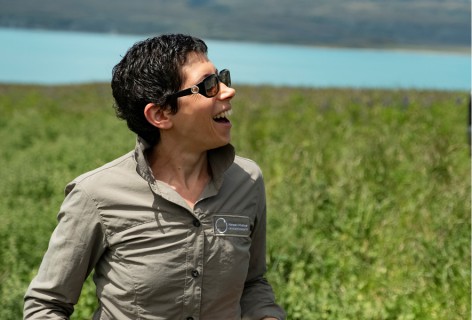Wasp biocontrol update 6
In this section
The past few weeks have brought much excitement to the project.
![Adult [Sphecophaga]. Image: Bob Brown Adult [Sphecophaga]. Image: Bob Brown](/assets/Discover-Our-Research/Biosecurity/Invasive-invertebrates/Vespula-Wasps-in-New-Zealand/Adult_Sphecophaga__ResizedImageWzQwNSwyNzBd.jpg)
Adult [Sphecophaga]. Image: Bob Brown
First, if you haven’t seen it yet, do check the nest excavation video that went viral! Bob is in the lead role, in a bee suit. He is also the cameraman, the script writer, the editor and the producer. What an amazing reaction this one generated – Bob made it to global media, including Discovery Channel, Canada who sent a crew to film Bob at work. Not yet known when the Discovery Channel item will be aired.
Together with the Discovery Channel crew, Bob was able to film the mites close up, which led to his discovery of the way the mites interact with the wasps. The first thing to understand in this context is how wasp nests operate like an organism, and how the different casts in the colony function like different organs. The workers are the long arms, venturing out to bring prey, but are unable to digest that pray. The larvae that occupy the cells in the comb are the colony’s stomach: they get fed prey by the workers, digest it, use some for their own growth, and regurgitate the reminder to feed the workers. It turns out that the mites feed on this regurgitated protein, robbing it from the workers.
Remember the mite gut analysis we told you about in update No. 4?
The results came back with no wasp DNA, and in fact with only mite DNA. Now we understand why: the mites feed on food that is well-digested, and any bit of DNA in it is completely broken down by the enzymes in the guts of the wasp larvae. That’s one riddle solved.
To summarise our knowledge we gained in the project to date:
- The mite Pneumolaelaps niutirani was first discovered in New Zealand in 2011 and named in 2016. It is not clear where the mite originates from. (Description and naming of the mite was done outside this project, in parallel).
- The mite is widespread throughout New Zealand and was detected in hibernating wasp queens collected by members of the public from Northland to Southland.
- The mite is found in wild nests of both Vespula species present in New Zealand – the common wasp V. vulgaris and the German wasp V. germanica.
- Mites aggregate in large numbers on wasp queens before they leave the nest to hibernate. This tells us something about the mite’s mechanism to disperse into new wasp nests. It also hints us that the mites have probably evolved in close relationships to the wasps to be able to evade the wasps’ meticulous hygienic behaviour, as well as to know when to jump on a queen for a winter shelter and a ride.
- Mite-infested wasp nests are smaller, half or even third the size of uninfested nests.
- Worker wasps in mite-infested nests appear less aggressive than workers in uninfested nests. This observation is anecdotal, and yet to be quantified.
Where to from here?
We suspect that robbing workers from food is not enough to cause wasp nests to be smaller and workers less aggressive. It is likely that the mites are involved in disease transmission to wasps. This means that in order to test the safety of the mite to honeybees and bumble bees, we would need a complex setup including molecular testing that go beyond our means in the current project. This also means that the mite may be more reasonable to develop as a medium-scale medium-term biocontrol agent, i.e., one that would take some repeated efforts in augmentation. In addition, work to underpin some of the basic science questions about the mites abilities to evade nest hygiene and about their ability to vector diseases to wasps is now incorporated into the Biological Heritage National Science Challenges.
In our project though, we want to make more progress towards a long-term, landscape-scale biocontrol.
In our recent committee meeting we have decided to refocus the project to look for wasp natural enemies that could do that.
We are now working with MPI’s Sustainable Farming Fund to re-define the project for its remaining year-and-a-bit. While we will continue to do a small amount of work on the mite, we will now turn our main efforts to bringing new genetic stock of the parasitoid Sphecophaga to New Zealand. More on that in the next update.


